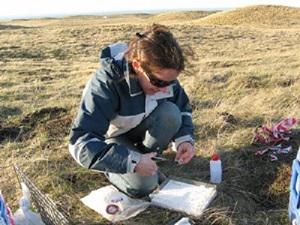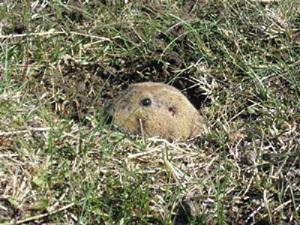Mariana Fasanella
The project will aim to analyse the effects of anthropogenic disturbance on the population genetic structure of Ctenomys magellanicus in Tierra del Fuego (Argentina).

Taking samples.
Patagonia, and specially Tierra del Fuego have a lot of problems with invasive species; in Tierra del Fuego, only the 32% of the terrestrial mammals are native, and C. magellanicus (Rodentia: Ctenomyidae) is one of them.

Ctenomys magellanicus.
Over the last century, the species has experienced a decline in abundance and range distribution, due to human activities. The introductions of sheep, building roads, and changes in vegetation and soil, due to farming activities, have contributed to discontinuity and fragmentation of the landscape.
This Project will examine the effects of anthropogenic disturbance on the population structure of C. magellanicus in Tierra del Fuego. For that porpoise we will use molecular markers (mtDNA and microsatellites) to analyse the genetic variability and population structure. To identify Conservation Units for the species we will combine the genetic information plus the anthropogenic disturbance onto satellite images. Constructing meaningful Conservation Units will be useful for the species, as we could then prohibit or diminish human activities in particular areas.
The conservation of small mammals requires knowledge of the genetic and ecological significance to the spatial scale at which species respond to changes of habitat, and since rodents represent an assemblage of species occupying different environments, their disturbance affects the dynamics of the entire community.
Knowing this background of the species situation, and that farming activities will continue to increase over the next few years, it is very important to delineate Conservation Units for C. magellanicus and to generate a management plan for the species in Tierra del Fuego. We can design a better management plan if we use genetic and ecological data. Once we design it and implement it, we can mount surveillance activities in the area to see whether the species’ status improves, gets worse, or fails to change.